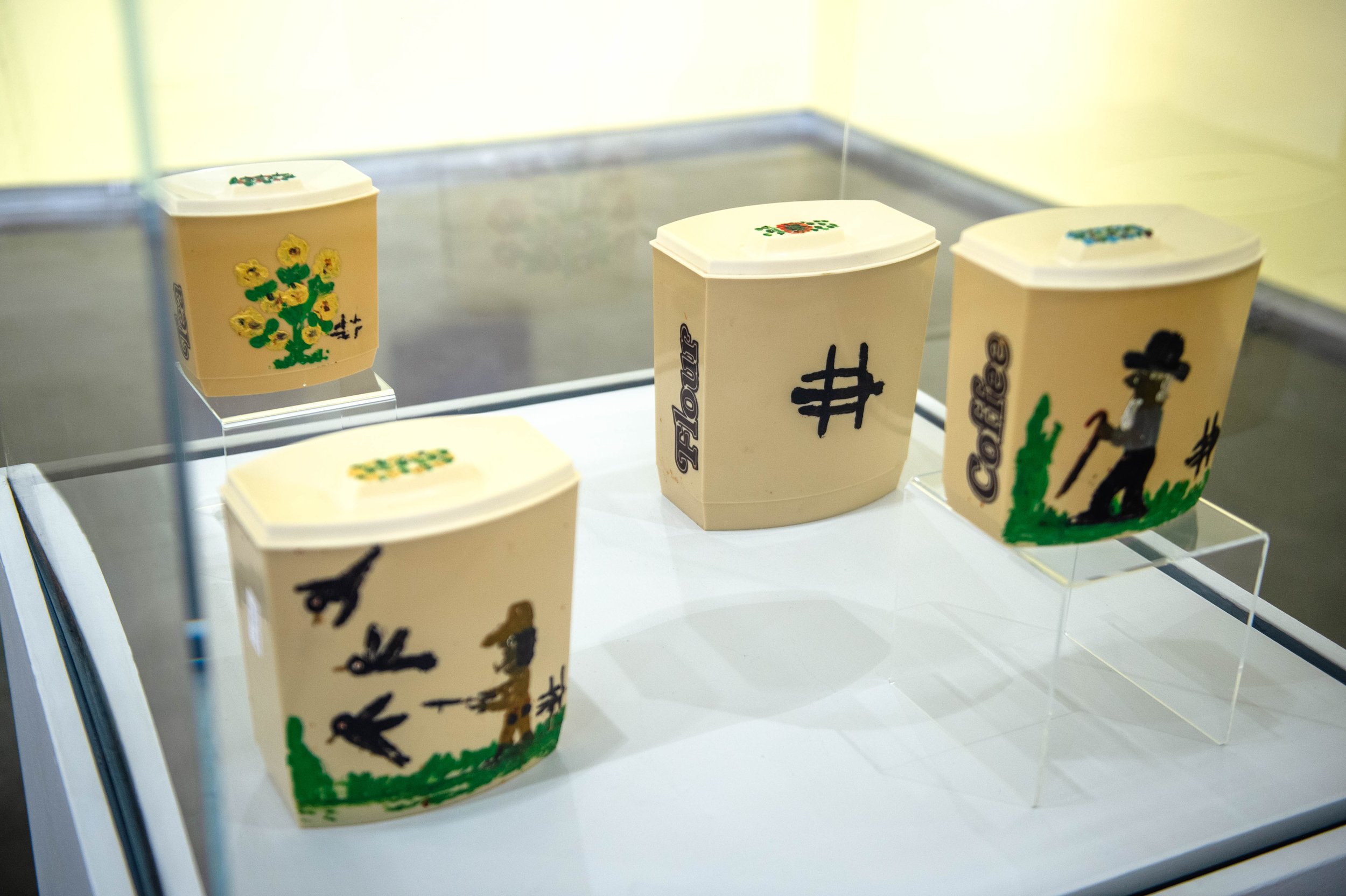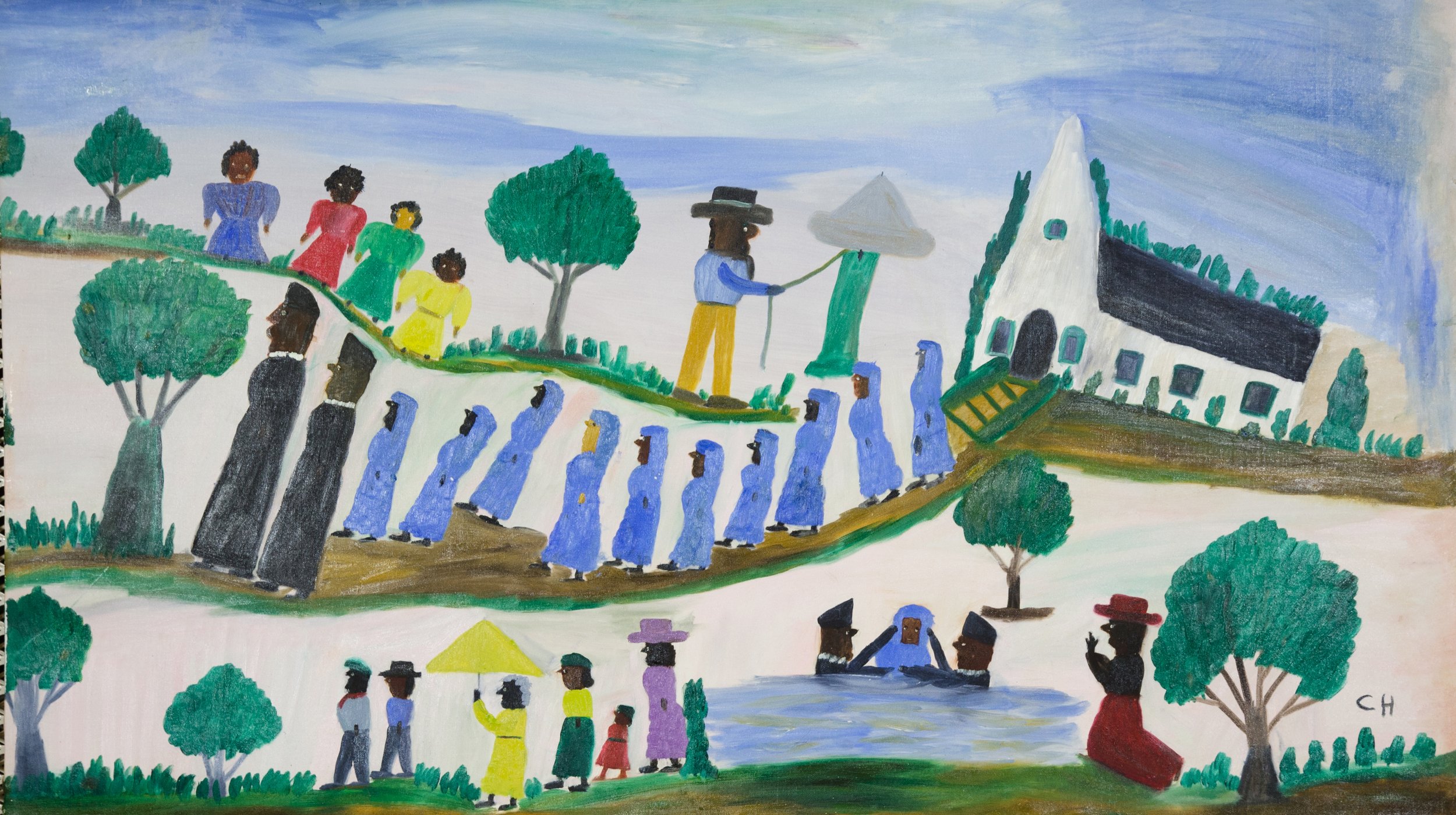Cherished: The Art of Clementine Hunter
ABOUT THE EXHIBITION
With over forty objects drawn from the Graves Family private collection and three LSU entities, the LSU Museum of Art, the LSU Rural Life Museum, and the Alexandria Museum of Art, the exhibition provides a glimpse into the life of one of Louisiana’s most renowned artists. Hunter’s paintings are a visual diary. She used art as a vehicle to preserve not only her own personal memories and feelings, but also the scenes and activities of everyday life on an evolving Southern plantation. Cherished explores many of Hunter’s most repeated patterns, subjects, and motifs—brightly colored zinnias, church scenes, and women picking cotton—bringing together multiple examples to highlight the subtle variations found in individual compositions. Each artwork embodies the artist’s unique style, celebrating her love of community, tradition, and family.
On view July 30–October 23, 2024
ABOUT CLEMENTINE HUNTER
Clementine Hunter lived and worked on Melrose Plantation near Natchitoches, Louisiana, a site established in 1796 by Louis Métoyer, the son of Marie Thérèse Coincoin, a former enslaved Creole woman, and Calude Thomas Pierre Métoyer. Under the latter ownership of John Hampton Henry and Carmelite “Miss Cammie” Garrett Henry, the estate was reinvented into a hub for early-twentieth century writers and artists. Having lived and worked most of her life at Melrose, Hunter’s being was deeply intertwined with the people, activities, and culture of the plantation. As a child and teen, she worked in the agricultural fields, eventually becoming a cook in the big house for Miss Cammie. As she entered her fifties, Hunter took up painting, rendering her first composition using discarded art supplies left by a visitor. Creating in the evenings after work, the artist was prolific, producing vibrant and expressive pictures drawn from her memories of Southern life—celebrations, religious events, and everyday activities. She put her marks on any surface available, such as cardboard, wood, bottles, gourds, and cutting boards. The paintings were initially collected by locals and visitors; however, by the 1970s, Hunter was well-known throughout the region for her art, attracting admirers from all over the country.
Exhibition Lenders & Sponsors
The LSUMOA is grateful to the Graves family, of Raising Cane’s Chicken Fingers, for generously loaning paintings to this exhibition, and to Taylor Porter Law Firm, for providing sponsorship. Additional research, including an oral history project dedicated to collecting the stories and memories of the late artist from her descendants and close friends, has been made possible by grants from the Traditional Fine Arts Organization (TFAO), the New Orleans Jazz and Heritage Foundation, and the Louisiana Division of the Arts through a Louisiana Project Grant. Thank you also to the LSU Rural Life Museum and the Alexandria Museum of Art for loaning works from their collections.
LSU MOA Installation







































Tune in to WRKF 89.3 Baton Rouge Public Radio for a special feature on the LSU Museum of Art’s oral history project highlighting the life of renowned Louisiana artist Clementine Hunter. Hear from LSU Museum of Art's educator and public programs manager Callie Smith and graduate student Sarah Nansubuga as they discuss their conversations with Hunter’s family, preserving her legacy and impact.